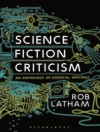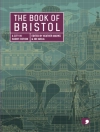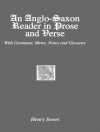‘Middlemarch’ is writer George Eliot’s crowning literary achievement and the novel is considered by many critics to be one of the finest pieces of fiction ever written.
Written in the style of ‘realism’ popular at the time, it is a study of the class and social structure of the fictional town of Middlemarch in central England and the story touches on all segments of life within the village, from the landed gentry to the working class and everyone in between. Primarily, however, the plot concerns the lives of the two main characters – Dorothea Brooke and Tertius Lydgate – both of whom find themselves mired in disastrous marriages.
Brimming with small-town intrigue, jealously, betrayal and scandal, ‘Middlemarch’ was a literary sensation when it was first published in 1872 and is now considered a classic for the ages. It is presented here in its original and unabridged format.
Sobre el autor
George Eliot (1819-1880) was the pen name of Mary Ann Evans, one of the Victorian era’s finest writers, best known for her books Adam Bede (1859), The Mill on the Floss (1860), Silas Marner (1861) and Middlemarch (1872), the latter of which is considered by many critics to be one of the finest novels in English literature.Eliot, born in Warwickshire, England, was the third child of estate manager Robert Evans and his wife Christina, the daughter of a local mill owner. She received an informal education at various boarding schools as a child, but after age sixteen was mainly self-taught. She immersed herself in the library at the estate her father managed and was heavily influenced by Greek literature. Her proficiency in German made her a respected translator of several German texts and the ideas she was exposed to in these texts also impacted her writing a great deal. Another strong influence was a wealthy ribbon manufacturer she befriended, Charles Bray, whose radical ideas attracted a great many free-thinkers to visit his home and debate the hot topics of the day. Attending these meetings at the Brays exposed Eliot to such writers as Herbert Spencer, Robert Owen and the poet Ralph Waldo Emerson. Bray would eventually publish some of Eliot’s early writings in his newspaper. After a brief stay in Switzerland following her father’s death, Eliot returned to England and took up residence in London with a free-thinking writer and editor, John Chapman, where she embarked on a career as a reviewer and social critic. In time, she would begin a long-term relationship with a married philosopher and critic named George Henry Lewes whose open marriage with his wife Agnes would lead Eliot to begin using a pen name in her writing in order to maintain her privacy. She would eventually consider Lewes her husband (and even took his name) but the relationship was often the subject of disapproving gossip. Attracted by the new emphasis on ‘realistic’ fiction that was popular at the time, Eliot began her career as a writer of fiction with short stories and then, in 1859, her first novel, Adam Bede. The novel proved to be so popular (and the public’s interest in the actual identify of the author so intense), that Eliot was forced to acknowledge herself as the book’s writer, shocking the reading public when news of her relationship with Lewes was revealed. The scandal did not effect the popularity of her books, however, and she continued to write popular novels for the next decade and a half, including The Mill on the Floss (1860), Silas Marner (1861) and her masterpiece, Middlemarch in 1872. Within two years of Lewes’ death in 1878, Eliot married John Walter Cross but, due to her poor health, the marriage did not last a year. Eliot fell ill with a throat infection in December of 1880 and died soon afterwards. She is buried in Highgate Cemetary in East London.












